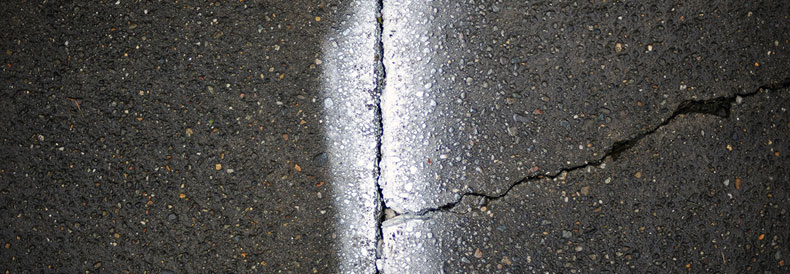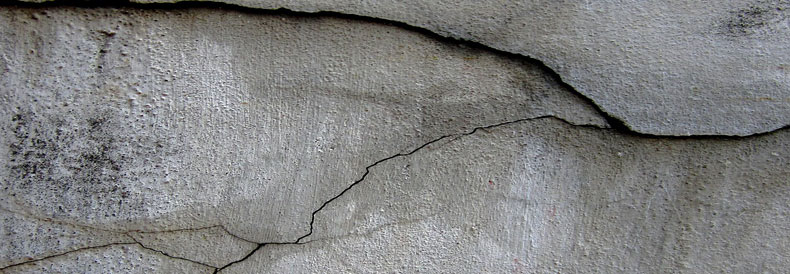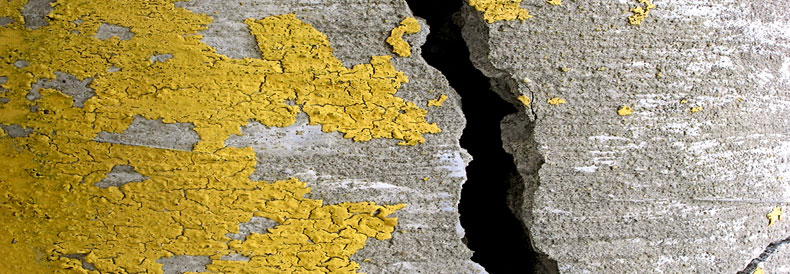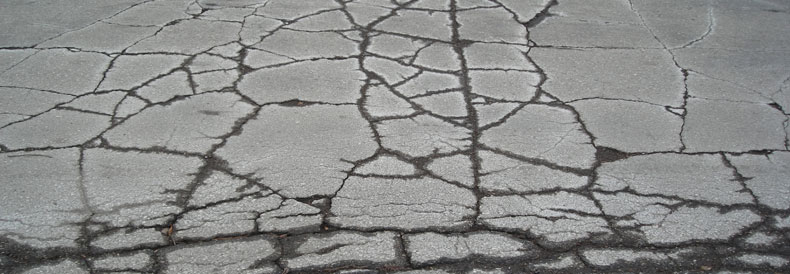Solved! What to Do
About Cracks in Concrete

Concrete, the reasons why it cracks, is almost personified because it truly sounds like it is alive. There are so many different reasons that will cause cracks in concrete and then there are some things that seem a little strange and cannot be explained! The truth is unless there is a clear issue, concrete typically just cracks as time goes on. Concretes willingness to crack is one of the most important reasons to ensure that all precautions are taken! Below you’re going to find different types of cracks, why they happen, and the best ways to handle them!
Honey, I shrunk the concrete!

This is a common issue when the cement and water ratio is not where it is supposed to be. Any substance that has water will shrink as it dries because the water will begin to evaporate. This type of shrinkage causes cracks and sometimes curling! However, the cracking typically starts soon after the final touches have been made to the slab and it will start wherever the slab feels the weakest. These cracks can be planned for and control joints can be added to minimize the possibility of this happening. Some reasons shrinkage cracks become an issue include:
- Too much water is added to the mixture so more water evaporates
- Inappropriate joint placement
- Wide joints will crack over time
Structure right, structure good!

Cracks like these can be found in old and new buildings and are typically caused by too much pressure on buildings themselves. These pressures can come from anywhere, including things outside of your control like winds and hurricanes, so these types of cracks are truly a matter of time. Because concrete does not bend or retreat, added pressure causes cracks, and those cracks occur in different widths that change the level of the concrete floors. These aren’t cosmetic cracks and tend to create some safety hazards.
- These cracks become tripping hazards
- They change the elevation of the concrete floors making it a very different area to utilize
- There are different methods to be implemented depending on what the property is used for
Craze the cracking’!

This is a purely aesthetic issue that seems to be one of the most annoying, especially for properties that depend on aesthetics, like retail centers. These cracks form map like cracks that do not ever seem to have an origin point. When moisture is stuck underneath the already dried top surface, your concrete suffers tremendously. Craze cracking is common if the slab is placed when the temperature and weather conditions were not conducive.
- These cracks are cosmetic and can be used to enhance the look of your floors
- Do not let air, wind, or other elements into the area where your concrete has been poured
- Use paints and different dye techniques to turn the cracks into assets
Concrete cracks and there isn’t a way out of that quite just yet! There are ways to prolong the smooth crackles surface but there has yet to be a way to 100% keep cracks from occurring! The best and most important way to get started with a crack-free surface is to call a professional.
